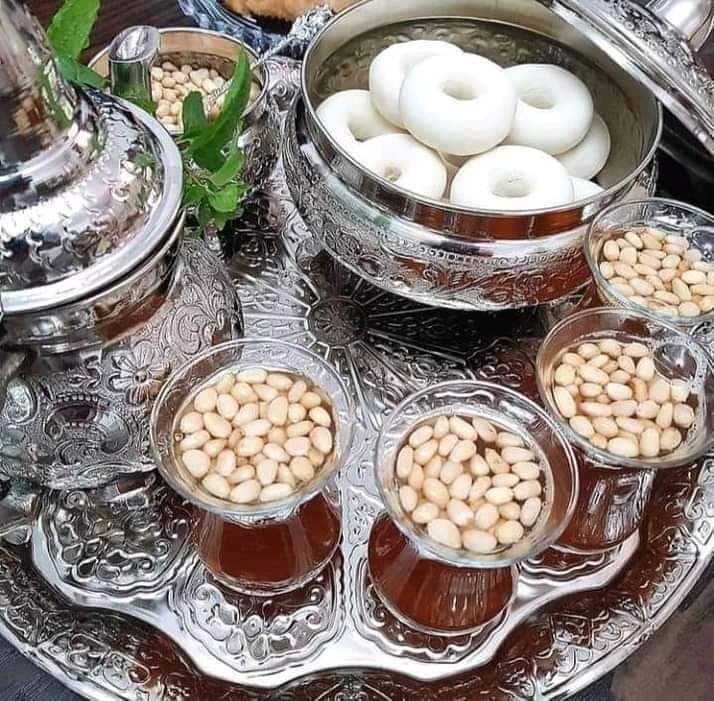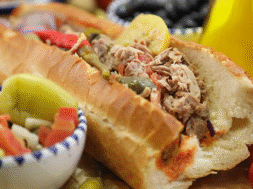Tunisian Pine Nut Tea: A Decadent Everyday Ritual
In Tunisia, tea is more than just a drink — it’s a ritual of hospitality, a pause in the day, and sometimes, a little luxury. One of the country’s most iconic variations is pine nut tea (thé aux pignons / shai bil pignol): a glass of sweet, fragrant green or black tea served with a spoonful of raw pine nuts floating on top.
The first time we tried it was in a café in Sidi Bou Said, overlooking the Mediterranean. The tea came steaming hot in a tall glass, sugar swirling at the bottom, pine nuts bobbing on the surface. It was fragrant, nutty, and indulgent — like sipping tradition with a twist of decadence.
Pine nut tea is often enjoyed in the afternoon or evening, especially in cafés or at family gatherings. It’s a symbol of refinement: pine nuts are expensive, so adding them to tea turns a simple drink into a treat. The nuts soak up the hot tea, becoming soft and flavorful, eaten with a spoon once the glass is empty.
It’s also a social drink — a sign of generosity when served to guests. And though it feels fancy, it’s deeply Tunisian: bold in flavor, simple in preparation, and meant to be shared.

Why do Tunisians drink tea with pine nuts?
Pine nuts add a nutty richness and a touch of luxury to ordinary tea. They turn a simple glass into something festive and indulgent, symbolizing hospitality and care.
What kind of tea is used for pine nut tea?
Traditionally, Tunisians use green tea with mint in the north and strong black tea in the south. Both are sweetened generously with sugar.
Do you eat the pine nuts in Tunisian tea?
Yes! After finishing the tea, the softened pine nuts are scooped up with a spoon. They’re infused with the flavor of the tea and act as a sweet little snack.
Is Tunisian pine nut tea healthy?
Yes. Green or black tea provides antioxidants, while pine nuts add healthy fats, protein, and minerals. The drink is sweetened with sugar, so it’s indulgent, but overall it’s lighter than many desserts.
Can you make pine nut tea at home?
Absolutely. Brew sweet green or black tea, pour it into glasses, and add a spoonful of raw pine nuts to float on top. Let them soak as you sip, then enjoy them at the end.
Share this recipe
Tunisian Pine Nut Tea (Thé aux Pignons)

NUTRITION
Ingredients
- 4 tsp loose green tea or strong black tea, like gunpowder or Chinese tea
- 3 –4 tbsp sugar adjust to taste
- 2 cups boiling water
- 2 –3 tbsp pine nuts per serving, untoasted
- Fresh mint optional, for garnish
Instructions
- Brew the tea: In a teapot, add loose tea leaves and sugar. Pour boiling water over and steep for 3–5 minutes, depending on desired strength.
- Strain: Pour the tea through a strainer into tall glasses.
- Add pine nuts: Drop a spoonful of raw pine nuts into each glass — they will float on top of the tea.
- Serve: Enjoy hot, with the pine nuts eaten at the end as a sweet, nutty finish.




